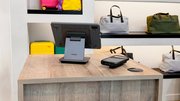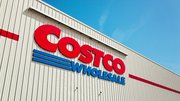Commentary
Digitally-native brands embrace omnichannel sales strategies with success
Heath Wells, co-founder and CEO of NuORDER, explains why digitally-native brands that want to follow in the footsteps of successful predecessors must develop their digital story and broadcast it loudly.

October 22, 2018
By Heath Wells, co-founder and CEO of NuORDER
The past few years have been e-commerce's time to shine, with new online-only retailers emerging every other week. According to research from Deloitte, the retail market is expected to grow between 3.2 and 2.8 percent this year, and brands and retailers are realizing the "retail apocalypse" isn't apocalyptic at all. Rather, we're seeing online-only direct to consumer brands launching physical storefronts and adopt wholesale sales strategies to get products to the masses and reach people where they're already shopping.
Deloitte found that 90 percent of worldwide retail sales are still done in physical stores, and a growing number of etailers like Warby Parker, Glossier and Bonobos that started exclusively online are expanding their sales approach to include wholesale strategies and physical retail stores. These brands are paving the way for other digitally-native brands with an "Instagram first, sell afterwards" ethos to breakout and refresh brick-and-mortar retail. Digitally-native brands are leveraging their digital stories to break into innovative and reimagined physical locations (pop-ups, showrooms and experiential exhibits), consequentially refreshing the tired retail landscape.
Earlier this year, Casper announced its launch of a brick-and-mortar store to complement its online sales and incorporate a physical experience. The company was founded four years ago out of a one-bedroom apartment based on the simple premise that mattress shopping was a terrible experience that needed to be modernized. They've shared this point of view across digital platforms, leveraging video to show consumers just how easy purchasing and receiving a Casper mattress can be. When their brick-and-mortar store was announced, not only were consumers eager to see the merchandise in person, but they were excited by the digital story and felt like they were part of Casper's growth journey.
Similarly, Glossier founder and CEO Emily Weiss started a blog in 2010 called Into the Gloss, where she candidly interviewed women and swapped beauty tips, because she felt that beauty shopping lacked the context of real women and real, shared experiences. Glossier became more than just a brand, but rather an online resource for women, so when the company announced pop-up shops, consumers already felt comfortable and familiar stepping into the space.
These narratives are syndicated throughout both companies' press coverage, websites and social media presence, which help provide texture and background. Consumers who are familiar with the tenacious digital story feel connected to the company and products — ultimately helping Casper and Glossier sell their mission and merchandise.
While direct to consumer can be an effective channel to garner name recognition, early brand adoption and stoke brand loyalty, it's not enough to keep up with consumer demand. Noli Yoga, a luxury activewear brand based in New York City originally launched direct to consumer, and gained a huge social media following among yogis. While social media helped Noli Yoga become established and reach its yogi consumer base, it was critical to implement a wholesale strategy to keep up with orders and continue to grow the brand.
Wholesale is arguably the most profitable and therefore important channel to brands adopting an omni-channel approach because it allows for scalability, growth and revenue generation. Moving into wholesale helps brands that may have struggled to meet consumer demand in a D2C model sell to their target audiences and offer additional touchpoints and sales opportunities with potential customers.
In today's retail landscape, the online digital story and offline physical experience are more complementary than competitive, and successful brands like Casper will properly leverage both together to meet customer expectations and shopping preferences. According to research from a recent survey of more than 400 brands, 83 percent of brands feel the opportunities are endless for getting product to the consumer via physical stores, eCommerce, direct to consumer and through traditional retail partners.
Digitally native brands should be more empowered than ever to expand into brick-and-mortar. This can be in the form of creating their own proprietary stores, through pop-up shops, or by finding retailers to partner with. In addition to their standalone stores, Casper's merchandise is also now sold in
Target stores around the world, as is digitally-native brand Harry's Razors. Another eCommerce darling, Leesa Mattresses, went physical through wholesale too, and is now sold in the showrooms of traditional retailer West Elm.
Digitally-native brands that want to follow in the footsteps of successful predecessors should develop their digital story and broadcast it loudly. The scrappy, relatable, gritty context of the company will help consumers, retailers and wholesale buyers become enchanted by the brand personality.
In the modern retail landscape, a complementary online and offline presence will resonate with both retailers and consumers. With a compelling online story and social media following, breaking out into a physical location will seem like a natural next step, and shoppers will be waiting with baited breath for the chance to check the brand they've been following online in-person. This chain reaction results in a refreshed brick-and-mortar retail landscape that is almost unrecognizable from legacy retail stores and trends that came before.





